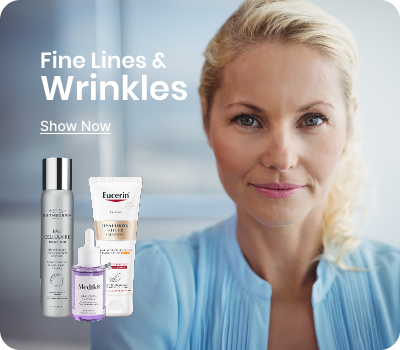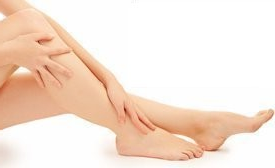
If you’re prone to breakouts or blackheads, or if you suffer from dull skin, exfoliation could be your secret weapon. By regularly removing dead skin cells, you’re preventing them from clogging up your pores and allow your moisturisers and serums to penetrate deeper and work more effectively. It’s like giving your skin a deep clean, helping to keep it clear and happy. Exfoliation is an important part of any skincare regimen. Here are some of the main exfoliating techniques you should consider.
Physical Exfoliation for Removing Dead Skin Cells
Microdermabrasion. This method uses tiny beads or crystals to gently buff away dead skin. It's suitable for all skin types and works well on areas like the knees, elbows and feet. Just be gentle, especially if you have sensitive skin.
Scrubbing with grains. Traditional natural remedies like sugar and salt scrubs are an effective physical exfoliant. Massage in circular motions onto damp skin. Start with a gentler scrub and build up tolerance over time.
Gommage gloves. These exfoliating gloves have tiny nubs inside to gently slough off dead skin as you massage your face and body. They're convenient to use in the shower but are less precise than some targeted exfoliants.
Chemical Exfoliation with Enzymes and Acids
AHA/BHA exfoliants. Alpha Hydroxy Acids (AHAs) and Beta Hydroxy Acids (BHAs) work by dissolving the bonds that hold dead skin cells together. Look for Glycolic, Lactic, Salicylic and Mandelic acids in leave-on exfoliant serums and toners. Lactic acid, a gentle AHA, is particularly effective in improving skin texture and fading dark spots.
Enzyme exfoliants. Enzymes like Papain and Bromelain occur naturally in fruits and plants, and can help dissolve keratin in dead skin. They’re gentle exfoliants suitable for sensitive skin.
Exfoliation doesn’t have to be complicated. Find a technique that suits your skin type and stick to it once or twice a week. Your skin will soon become accustomed to the extra stimulation and respond with a noticeable glow. Improving skin texture is one of the key benefits of regular exfoliation.
If you’re new to exfoliating, start off gently and build up frequency over time. Your skin needs time to adjust, so go slowly at first. Listen to your skin’s feedback and back off if you experience irritation or redness that doesn’t fade quickly. Regular exfoliation can also help even out your skin tone, reducing hyperpigmentation and revealing a more radiant complexion.
Good exfoliation promotes cell turnover, helping your skin renew itself and minimise the signs of ageing. Over time, you may find that your complexion appears brighter, pores look smaller and fine lines seem less pronounced. But the real benefit is soft, smooth skin that feels healthy and rejuvenated.
Try introducing a physical and/or chemical exfoliant into your routine. Start with once a week and observe how your skin responds. With patience and a light touch, exfoliation could become your secret weapon against dull, lacklustre skin.
Choosing the Right Exfoliator - Know Your Skin Type
Understanding your skin’s personality is key to choosing the right exfoliator. An exfoliating cleanser can be a great addition to your skincare routine, offering benefits for various skin types.
Dry skin needs gentler physical exfoliation, while oily and combination skin can tolerate a stronger approach.
Sensitive skin requires chemical exfoliants containing mild AHAs and enzymes. Salicylic acid is ideal for acne-prone skin, helping to clear pores while also exfoliating.
Here are the main skin types and suitable exfoliants:
Dry skin: Start with gentle physical scrubs containing Jojoba or Sweet Almond oil. Enzyme exfoliants and 5% - 10% Glycolic acid are suitable chemical options. Avoid harsh scrubs.
Oily skin: Clay-based scrubs and stronger AHAs like 10% - 15% Glycolic acid work well. Salicylic acid exfoliants can help regulate oil production and clear pores.
Sensitive skin: Begin with enzyme or 2% - 5% Glycolic acid exfoliants. Avoid physical scrubs and high concentrations of AHAs. Look for calming ingredients like Aloe Vera and Allantoin.
How to Properly Exfoliate Your Face and Body for Glowing Skin
Now that you've chosen your ideal exfoliator, it's important to use it correctly for maximum effectiveness.
For your face:
- Start with damp skin and apply a pea-sized amount of your exfoliant.
- Massage gently in circular motions, avoiding the eye area.
- Leave on for 1-2 minutes before rinsing thoroughly with lukewarm water.
- Pat your skin dry and follow with your regular moisturiser.
For your body:
- Apply your exfoliant to damp skin while in the bath or shower.
- Gently rub in an upward motion, focusing on dry areas like elbows and knees.
- Rinse well to remove all traces of the scrub before exiting the tub.
- Moisturise immediately to seal in hydration.
Following these simple steps will help you gain the full benefit of exfoliation while minimising the risk of irritation. With consistency and patience, you'll soon have smooth, glowing skin that's fresh and ready for whatever the day may bring.
Exfoliation Aftercare
Now that you’ve exfoliated, it’s important to care for your freshly renewed skin properly:
- Moisturise immediately after exfoliating, both morning and night. Your skin’s moisture barrier has been disrupted so it needs extra hydration. Opt for a non-greasy moisturiser to help support and strengthen the skin barrier.
- Cut back on harsh products for a day or two. Your skin is more sensitive post-exfoliation so avoid retinol, benzoyl peroxide or other powerful ingredients.
- Apply sunscreen daily, especially if you’ve used AHAs. Your skin is more photosensitive for up to two weeks after exfoliating, so adequate SPF is essential.
- Give your skin a break. Don’t exfoliate every day, especially if you have sensitive skin. Once or twice a week is sufficient for most people. Listen to your skin and scale back as needed.
- Stay hydrated. Drink plenty of water to help your skin replenish itself from within. Aim for around two litres a day.
With proper aftercare, you’ll gain the benefits of exfoliation while minimising any irritation or inflammation. Be gentle but consistent, and your skin will thank you!
FAQs: Answering Common Exfoliation Questions
Here are answers to some of the most common questions around exfoliation:
How often should I exfoliate? Less is more when it comes to exfoliation. Start by exfoliating once or twice a week and listen to your skin's feedback. Over time, you may be able to increase to three times per week maximum. But never exfoliate daily, as this can cause irritation and damage.
Which type of exfoliant is the most effective? There is no single "most effective" exfoliant - it depends on your skin type and needs. Chemical exfoliants like AHAs and BHAs tend to penetrate deeper and exfoliate more effectively. But physical scrubs have benefits for sloughing off dry, flaky skin. A combination approach may work best for some.
How do I know if I'm exfoliating too much? Signs you may be overdoing it include dryness, tightness, small breakouts, redness and irritation. If you notice any of these symptoms, scale back your exfoliation frequency and switch to a gentler formula. Your skin needs time to recover between exfoliation sessions.
Can I exfoliate my entire body? Yes, you can extend exfoliation to your arms, legs and even feet. However, start slowly and scale up based on your skin's tolerance. AHA and BHA body washes can be effective for full body exfoliation, along with loofahs and body scrub gloves. Full body exfoliation can help slough off dead skin cells, unclog pores and leave you with softer, smoother skin. Just go slowly, monitor your skin's reaction and avoid overdoing it. With the right precautions, you can safely incorporate exfoliation into your full body skincare routine.
Can I exfoliate if I have acne? Yes, exfoliation can actually help improve acne-prone skin by removing dead skin cells that clog pores. However, it's important to use a gentle exfoliant formulated for sensitive skin and follow these guidelines:
- Start with 1-2 times per week and build up slowly.
- Choose a mild chemical exfoliant with AHAs or BHAs rather than a harsh physical scrub.
- Moisturise thoroughly afterwards to replenish moisture and reduce irritation.
- Watch for any signs of irritation and scale back if needed.
With patience and the right approach, regular exfoliation can actually help improve acne over time by preventing pores from becoming clogged and reducing inflammation. But listen to your skin and adjust as needed.
Conclusion
Regular exfoliation is an essential part of any skincare routine when done properly. Remember - less is more when it comes to exfoliating, so go gentle, especially if you have sensitive skin.
With patience and consistency, regular exfoliation can help reveal smoother, brighter, more radiant skin. So get started on your journey to glowing skin today! Begin by choosing the right exfoliant for your needs, and exfoliate no more than once or twice per week.
Over time, as your skin adjusts, you can slowly increase your exfoliation frequency. Always follow with hydrating moisturiser to replenish moisture and prevent irritation. And pay close attention to any red flags that you may be exfoliating too aggressively. With a balanced, tailored approach, exfoliation can transform your complexion.





